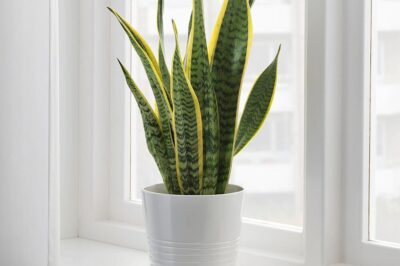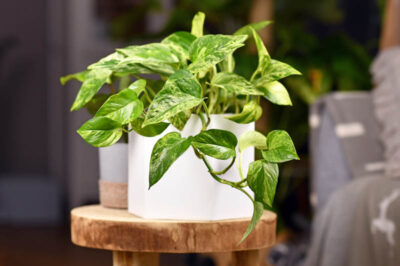The Peace Lily (Spathiphyllum) is a beloved houseplant known for its elegant white blooms and lush green foliage. Its air-purifying qualities and relatively easy care make it ideal for beginners and seasoned plant enthusiasts. This guide will walk you through everything you need to grow and care for a thriving Peace Lily indoors.
Why Choose Peace Lily?
Stunning Blooms: Produces white, hood-like flowers that add elegance to any space.
Air Purification: Removes toxins like benzene and formaldehyde from indoor air.
Low Maintenance: Adapts well to various conditions, perfect for busy households.
Compact Size: Fits well on tabletops, shelves, or as a floor plant.
Step-by-Step Guide to Growing Peace Lily
1. Provide Low to Bright Indirect Light
Peace Lilies thrive in low to bright indirect light, making them versatile for different home environments. They can tolerate low light but bloom best in brighter, filtered light. Avoid direct sunlight, which can scorch the leaves.
Tip: If blooming slows, move the plant to a brighter spot.
2. Use Well-Draining Soil
Plant your Peace Lily in a well-draining potting mix, such as a standard houseplant mix with added perlite or peat moss. Good drainage prevents root rot, a common issue with overwatered lilies.
Pro Tip: Ensure the pot has drainage holes to avoid water buildup.
3. Water Consistently
Water when the top inch of soil feels dry, keeping the soil slightly moist but not soggy. Peace Lilies are sensitive to overwatering, so check the soil regularly. They’ll droop when thirsty, making it easy to know when to water.
Signs of Overwatering: Yellowing leaves or a soggy base.
Signs of Underwatering: Wilting or drooping leaves.
4. Maintain Humidity and Temperature
Peace Lilies prefer temperatures between 65-80°F (18-27°C) and high humidity (40-60%). Mist the leaves occasionally, use a humidity tray, or place the plant in a bathroom or kitchen to boost humidity.
Avoid: Cold drafts or sudden temperature changes, which can stress the plant.
5. Fertilize Lightly
Feed your Peace Lily with a balanced liquid fertilizer (e.g., 10-10-10) every 6-8 weeks during spring and summer. Dilute the fertilizer to half strength to avoid overfeeding. Skip fertilizing in fall and winter.
6. Prune for Health
Remove yellow or brown leaves and spent blooms by cutting at the base to keep the plant tidy. Regular pruning encourages new growth and maintains its attractive appearance.
7. Propagate Peace Lily
Propagating Peace Lilies is straightforward through division:
Gently remove the plant from its pot and separate the root clumps, ensuring each section has roots and leaves.
Plant each division in a pot with fresh, well-draining soil.
Water thoroughly and keep in indirect light. New growth should appear in a few weeks.
Common Problems and Solutions
Brown Leaf Tips: Often caused by low humidity or overfertilizing. Increase humidity and reduce fertilizer frequency.
No Blooms: Insufficient light or lack of nutrients. Move to brighter indirect light and fertilize lightly.
Pests: Watch for spider mites or aphids. Wipe leaves with soapy water or use neem oil.
FAQs About Peace Lily
Is Peace Lily toxic?
Yes, it’s toxic to pets and humans if ingested. Keep it out of reach of children and animals.
How often does a Peace Lily bloom?
With proper care, it can bloom 1-2 times a year, typically in spring or summer.
Can Peace Lily grow in low light?
Yes, it tolerates low light well but may not bloom. Brighter indirect light encourages flowers.
Conclusion
The Peace Lily is a stunning and low-maintenance houseplant that brings beauty and tranquility to any home. With the right light, watering, and humidity, it will reward you with lush foliage and elegant blooms. Start growing your Peace Lily today and enjoy its charm and air-purifying benefits!
Keywords: Peace Lily, Spathiphyllum, Peace Lily care guide, indoor plant for beginners, propagate Peace Lily
News
Unlock the Secret to Growing a Thriving ZZ Plant
The ZZ Plant (Zamioculcas zamiifolia), with its glossy, upright leaves, is a nearly indestructible houseplant that’s perfect for beginners and…
How to Grow Snake Plant: The Ultimate Care Guide
Snake Plant, or Sansevieria, is a tough, low-maintenance houseplant known for its long, upright, sword-like leaves. With its striking green…
How to Grow Mint at Home: A Complete Beginner’s Guide
Discover how to grow mint at home in pots or gardens. This easy guide covers planting, care, and harvesting tips…
How to Grow Monstera Deliciosa: A Complete Care Guide
Monstera Deliciosa, often called the Swiss Cheese Plant, is a tropical beauty known for its large, heart-shaped leaves with unique…
How to Grow Tomatoes at Home: Easy Guide for Juicy, Healthy Tomatoes
Want to grow tomatoes at home? Learn how to plant, care for, and harvest juicy tomatoes with this step-by-step gardening…
How to Grow Pothos Marble Queen: A Beginner’s Guide
Pothos ‘Marble Queen,’ also known as Epipremnum aureum ‘Marble Queen,’ is a stunning houseplant with heart-shaped, variegated leaves featuring creamy…
End of content
No more pages to load












